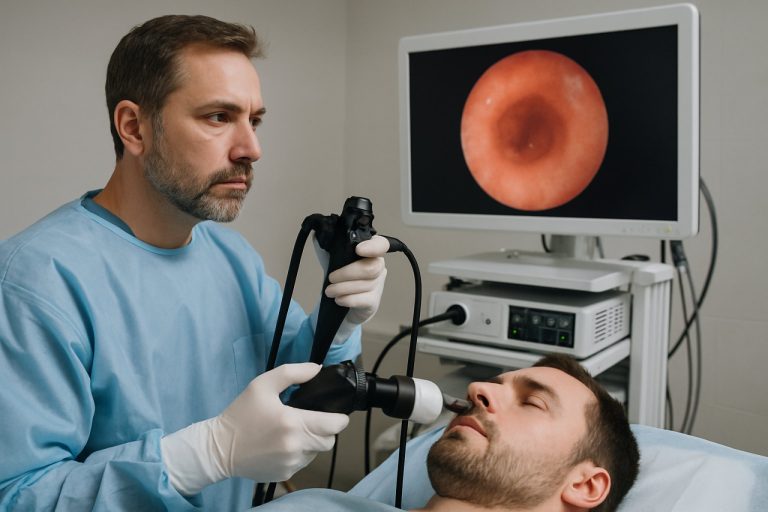
Table of Contents
- Executive Summary: 2025 Market Momentum & Key Takeaways
- Cyclopropane’s Role in Advanced Pharmaceutical Intermediates
- Latest Synthesis Methods: Efficiency, Safety, and Sustainability
- Technology Leaders & R&D Innovations (2025-2029)
- Market Size, Growth Forecasts, and Regional Analysis to 2029
- Key Suppliers and Strategic Partnerships (with Official Sources)
- Emerging Applications in Drug Discovery and Development
- Regulatory Landscape and Compliance Trends
- Challenges: Raw Materials, Scale-Up, and Environmental Impact
- Future Outlook: Opportunities and Disruptive Trends to Watch
- Sources & References
Executive Summary: 2025 Market Momentum & Key Takeaways
The cyclopropane synthesis market for pharmaceutical intermediates is set to experience robust momentum in 2025, underpinned by escalating demand for advanced drug molecules and the growing integration of cyclopropane motifs into active pharmaceutical ingredients (APIs). Cyclopropane is a critical structural component used to enhance metabolic stability, bioavailability, and receptor selectivity in numerous drug candidates, particularly in antiviral, anticancer, and central nervous system (CNS) therapies.
Recent announcements and data from leading chemical manufacturers point to increased capacity expansions and innovation in process chemistry. Companies such as BASF and Evonik Industries have underscored cyclopropane derivatives as strategic intermediates, investing in advanced synthesis platforms that prioritize both scalability and sustainability. Notably, MilliporeSigma continues to expand its catalog of cyclopropanation reagents, responding to the pharmaceutical sector’s shift towards more complex, chiral cyclopropane-containing scaffolds.
Key drivers for 2025 include the increasing rate of small molecule approvals by regulatory agencies, rising outsourcing of pharmaceutical manufacturing to specialized chemical suppliers, and a focus on green chemistry routes for cyclopropane ring construction. Modern synthesis techniques—such as transition metal-catalyzed cyclopropanation, photoredox-catalyzed methods, and biocatalytic approaches—are gaining traction for their efficiency and reduced environmental impact. This is evidenced by investments from major suppliers like Arkema and Solvay, who are actively developing sustainable cyclopropane synthesis solutions.
Outlook for the next several years suggests continued market expansion, with cyclopropane-based intermediates playing a pivotal role in the development pipeline of both branded and generic pharmaceuticals. Supply chain resilience, regulatory alignment, and further adoption of continuous manufacturing technologies will be pivotal for maintaining growth. Industry stakeholders are expected to focus on securing reliable access to high-purity cyclopropane intermediates and enhancing process efficiencies through digitalization and automation.
In summary, the cyclopropane synthesis sector is poised for accelerated growth in 2025 and beyond, driven by pharmaceutical innovation, strategic investments from leading chemical manufacturers, and a clear move toward sustainable and efficient production practices.
Cyclopropane’s Role in Advanced Pharmaceutical Intermediates
Cyclopropane rings have emerged as pivotal structural motifs in the synthesis of advanced pharmaceutical intermediates due to their unique physicochemical properties. Their notable ring strain and compact geometry impart desirable characteristics such as metabolic stability, increased lipophilicity, and the ability to modulate bioactivity, making them attractive for drug design. In 2025, the focus on cyclopropane synthesis is intensifying, particularly as pharmaceutical companies seek more efficient, scalable, and selective processes to meet the rising demand for complex drug candidates targeting oncology, antivirals, and central nervous system disorders.
Recent advances in cyclopropanation methodologies—especially those leveraging transition metal catalysis and photoredox strategies—are enabling the construction of cyclopropane-containing intermediates under milder, greener conditions. These technologies are being actively developed and scaled by specialized chemical manufacturers. For instance, Biosynth and Solvias are investing in catalysis research to broaden the substrate scope and functional group tolerance of cyclopropanation reactions, thus facilitating the integration of cyclopropane motifs into a wider range of pharmaceutical scaffolds.
With regulatory agencies emphasizing the reduction of genotoxic impurities and the adoption of green chemistry, there is a strong push toward process intensification. Companies such as Evonik Industries are focusing on continuous flow cyclopropanation, which offers improved safety when handling hazardous reagents like diazo compounds and allows for tighter process control and scalability. These continuous processes are expected to become mainstream within the next three years, significantly reducing production costs and environmental impact.
Furthermore, the integration of computational chemistry and automation in route scouting is accelerating the identification of novel cyclopropane building blocks. Lonza and Carbogen Amcis, both major contract development and manufacturing organizations (CDMOs), are expanding their offerings in custom synthesis of cyclopropane-based intermediates to cater to pharmaceutical innovators seeking proprietary molecular entities.
Looking ahead, the continued convergence of synthetic innovation, process engineering, and regulatory compliance is projected to maintain cyclopropane’s centrality in pharmaceutical intermediate development. The outlook for 2025 and the next few years suggests a robust pipeline of cyclopropane-enabled drug candidates advancing through clinical stages, underpinned by ongoing collaboration between pharmaceutical companies and specialized chemical suppliers.
Latest Synthesis Methods: Efficiency, Safety, and Sustainability
Cyclopropane rings are critical structural motifs in numerous pharmaceutical intermediates, imparting unique biological activity and metabolic stability. As demand for cyclopropane-containing compounds in drug discovery intensifies in 2025, the synthesis landscape is evolving to prioritize efficiency, safety, and sustainability.
One of the most prominent recent advancements is the adoption of flow chemistry for cyclopropanation processes. Flow reactors offer superior control over reaction parameters and mitigate hazards associated with diazo compounds and transition metal catalysts, which are often required for cyclopropanation. Leading chemical manufacturers, such as BASF and Evonik Industries, have reported integration of continuous flow systems to scale up cyclopropanation, resulting in reduced reaction times, improved yields, and enhanced operator safety. This method also reduces the generation of hazardous byproducts and facilitates efficient heat dissipation.
Catalyst innovation remains a focal point for sustainability. The development of recyclable and low-toxicity catalysts, including cobalt, iron, and copper complexes, is gaining traction in 2025. Companies like Sigma-Aldrich are supplying a range of earth-abundant transition metal catalysts designed for safer and greener cyclopropane synthesis, supporting both academic research and industrial applications. These alternatives to traditional precious metal catalysts help reduce environmental impact and operational costs.
Photocatalysis and biocatalysis are also emerging as promising sustainable approaches. Visible-light-driven cyclopropanation, utilizing organic photocatalysts, eliminates the need for hazardous reagents and allows milder reaction conditions. Furthermore, enzyme-catalyzed cyclopropanation, though still at the research stage, is being explored by biotech companies such as Novozymes for its potential to offer high selectivity and minimal environmental footprint.
In line with regulatory and environmental pressures, manufacturers are increasingly implementing solvent reduction and solvent recycling strategies. For example, LANXESS has highlighted the importance of green chemistry principles in their process development for pharmaceutical intermediates, focusing on minimizing waste and maximizing atom economy.
Looking forward to the next few years, the outlook for cyclopropane synthesis is characterized by a convergence of automation, real-time process monitoring, and adoption of digital tools for process optimization. This trend is anticipated to further enhance reproducibility, reduce costs, and accelerate time-to-market of cyclopropane-based pharmaceutical intermediates, cementing their role in the evolving landscape of drug development.
Technology Leaders & R&D Innovations (2025-2029)
Cyclopropane synthesis remains a cornerstone in the development of advanced pharmaceutical intermediates, with global demand driven by the need for increasingly complex and chiral drug molecules. As of 2025, a select group of technology leaders and innovators are shaping the landscape through proprietary methods, process intensification, and sustainability-driven R&D.
Among the industry’s top players, Evonik Industries continues to advance cyclopropanation processes, integrating continuous flow technology to improve yield and safety. Their ongoing research into scalable, metal-catalyzed cyclopropanation enables the efficient production of key intermediates for active pharmaceutical ingredients (APIs) with improved cost-effectiveness. Similarly, BASF leverages its broad portfolio in fine chemicals to supply building blocks and reagents for cyclopropane ring construction, focusing on asymmetric catalysis to address rising demand for enantiopure drug substances.
On the innovation front, LANXESS is developing safer and greener alternatives to diazo compound-based cyclopropanation, reducing hazardous waste and mitigating environmental impact. These efforts align with industry-wide trends prioritizing green chemistry and regulatory compliance in pharmaceutical manufacturing. In addition, Arkema and Solvay are investing in next-generation catalysts and custom reagents, enabling more selective and atom-efficient cyclopropane formation pathways.
The integration of machine learning and process automation is another emerging trend for 2025–2029. Leading CDMOs such as Lonza are piloting digital tools to optimize cyclopropanation reaction parameters, aiming to shorten development cycles and enhance reproducibility at scale. These digital initiatives are expected to lower costs and improve speed-to-market for pharmaceutical intermediates.
Looking ahead, the outlook for cyclopropane synthesis technologies is robust. With pharmaceutical R&D pipelines increasingly targeting complex small molecules, demand for custom cyclopropane intermediates is projected to rise. The focus will remain on process intensification, sustainability, and digitalization, with technology leaders actively partnering with pharmaceutical companies to co-develop tailored solutions for next-generation therapeutics.
Market Size, Growth Forecasts, and Regional Analysis to 2029
The market for cyclopropane synthesis, particularly for pharmaceutical intermediates, is poised for notable growth through 2029, driven by the rising demand for advanced APIs (active pharmaceutical ingredients) and the expanding application of cyclopropane moieties in drug design. Cyclopropane rings impart unique structural and pharmacokinetic properties to drug molecules, making them increasingly valuable in medicinal chemistry. As of 2025, the cyclopropane synthesis sector is characterized by technological advancements in both batch and continuous-flow processes, improved safety protocols, and a broadening supplier base.
Key players actively producing and supplying cyclopropane and related intermediates include Air Liquide, Linde, and Praxair. These companies have invested in capacity expansions and process improvements to address pharmaceutical industry requirements for high-purity cyclopropane and custom derivatives. For example, Air Liquide has emphasized the supply of medical-grade cyclopropane, leveraging advanced purification technologies to meet stringent regulatory standards.
Regionally, North America and Europe lead the market due to the strong presence of pharmaceutical manufacturing hubs and established supply chains. The United States, Germany, and Switzerland remain at the forefront, supported by robust R&D investments and a focus on innovative drug development programs involving cyclopropane intermediates. In Asia-Pacific, the sector is experiencing the fastest growth, with countries such as China and India expanding their role as major pharmaceutical manufacturing centers. Companies like Linde and Air Liquide have notably scaled up operations in these regions, encouraged by favorable government policies and increasing domestic demand.
Looking ahead to 2029, market analysts anticipate a compound annual growth rate (CAGR) in the high single digits for cyclopropane-based pharmaceutical intermediates. This outlook is anchored by the expanding pipeline of cyclopropane-containing drug candidates, ongoing investments in green and scalable synthesis methods, and the continued globalization of pharmaceutical supply chains. Environmental regulations and safety standards are likely to further shape the market, prompting suppliers to adopt greener synthetic approaches and advanced containment systems.
In summary, the cyclopropane synthesis market for pharmaceutical intermediates through 2029 is set for steady expansion, underpinned by technological innovation, regional diversification, and the increasing strategic importance of cyclopropane motifs in drug discovery and development.
Key Suppliers and Strategic Partnerships (with Official Sources)
The global cyclopropane synthesis market for pharmaceutical intermediates is characterized by the presence of several specialized chemical manufacturers, each contributing through proprietary technologies, scale, and strategic collaborations. As of 2025, leading suppliers are focusing on the optimization of cyclopropanation methodologies and building partnerships with pharmaceutical companies to streamline the supply chain for high-purity cyclopropane derivatives.
Among the key suppliers, BASF and Evonik Industries have maintained strong positions with their advanced organic synthesis capabilities and extensive global manufacturing networks. These companies are noted for their investment in process intensification and green chemistry approaches, catering to the pharmaceutical sector’s increasing demand for sustainable cyclopropane intermediates. In parallel, Lonza Group and Solvay have expanded their custom synthesis services, focusing on tailored cyclopropanation routes and regulatory compliance that align with evolving drug development pipelines.
Strategic partnerships have become increasingly prominent, particularly between specialty chemical suppliers and pharmaceutical innovators. For instance, Wacker Chemie has entered into process development collaborations with pharma companies to optimize the scalable production of cyclopropane-based building blocks. Similarly, Arkema has leveraged its expertise in fine chemicals to form alliances aimed at the co-development of novel cyclopropane intermediates for active pharmaceutical ingredients (APIs).
The market is also witnessing the emergence of smaller, agile players such as SICHEM, who focus on high-purity, low-volume custom synthesis, supporting medicinal chemistry and early-phase pharmaceutical research. These niche suppliers frequently enter into exclusive supply agreements or research collaborations, offering flexible production capacities and rapid response to customer specifications.
Looking forward, the trend toward integrated supply models is expected to intensify. Large-scale firms are likely to pursue further vertical integration, while innovative SMEs form strategic alliances to secure raw material supply and leverage advanced process technologies. These dynamics are anticipated to enhance reliability, transparency, and sustainability in the cyclopropane supply chain for pharmaceutical intermediates over the next several years.
Emerging Applications in Drug Discovery and Development
Cyclopropane-containing motifs are increasingly prominent in the design of novel pharmaceutical intermediates, driven by their unique physicochemical properties that enhance metabolic stability, target specificity, and bioavailability. In 2025, the synthesis of cyclopropane rings is expected to play a central role in the development of next-generation drugs, particularly in therapeutic areas such as oncology, central nervous system disorders, and antivirals. The pharmaceutical industry is leveraging advances in catalytic asymmetric cyclopropanation, transition-metal catalysis, and photoredox processes to meet the growing demand for complex cyclopropane derivatives.
Recent developments include the adoption of green chemistry principles for cyclopropane synthesis, minimizing hazardous reagents and improving atom economy. Companies such as BASF and Evonik Industries are scaling up production of key cyclopropane intermediates, with a focus on sustainability and regulatory compliance. These firms are implementing continuous flow processes and biocatalytic methods to enhance yield and purity, crucial for pharmaceutical applications.
The integration of cyclopropane rings in small-molecule drugs has become a standard strategy to overcome metabolic liabilities and improve pharmacokinetic profiles. For example, cyclopropane fragments are found in several clinical candidates under evaluation by major pharmaceutical companies. Lonza and CARBOGEN AMCIS have reported collaborations with drug developers to supply custom cyclopropane intermediates for investigational new drugs (INDs) and new chemical entities (NCEs).
Looking ahead, the outlook for cyclopropane synthesis in drug discovery remains robust. The next few years will likely see increased adoption of automated synthetic platforms and digital process control, enabling rapid scale-up from lab to manufacturing. The push toward personalized medicine and novel therapeutic modalities—such as targeted protein degraders and RNA-modifying agents—is also expected to drive innovation in cyclopropane chemistry.
In summary, the synthesis of cyclopropane intermediates is poised to expand its impact on pharmaceutical development in 2025 and beyond, with industry leaders investing in advanced, sustainable technologies and forging partnerships to accelerate drug discovery pipelines.
Regulatory Landscape and Compliance Trends
The regulatory landscape surrounding cyclopropane synthesis for pharmaceutical intermediates is evolving in 2025, shaped by global harmonization efforts, heightened quality demands, and sustainability imperatives. Regulatory authorities such as the U.S. Food and Drug Administration (FDA), the European Medicines Agency (EMA), and Japan’s Pharmaceuticals and Medical Devices Agency (PMDA) continue to reinforce stringent requirements for the manufacturing and handling of cyclopropane-based intermediates, focusing on safety, purity, and environmental impact.
One notable trend is the increased scrutiny of synthetic methodologies employed in cyclopropane production. Agencies are emphasizing the need for robust impurity profiles and comprehensive risk assessments, especially as cyclopropane motifs become prevalent in new drug candidates. The U.S. Food and Drug Administration has updated guidelines for process validation and control strategies, compelling manufacturers to provide detailed documentation on raw material traceability and batch consistency. Similarly, the European Medicines Agency requires full disclosure of synthetic routes, including any hazardous reagents or solvents, under Good Manufacturing Practice (GMP) directives.
Environmental compliance is another area of focus. Regulatory bodies are increasingly mandating green chemistry approaches and lifecycle analysis for cyclopropane synthesis. This is driving pharmaceutical suppliers and contract development and manufacturing organizations (CDMOs) to adopt safer reagents and minimize waste. Leading suppliers like Sigma-Aldrich and Thermo Fisher Scientific are responding by offering greener cyclopropanation reagents and scalable processes that align with the latest environmental standards.
Supply chain transparency is also becoming a regulatory priority. As cyclopropane intermediates are often sourced globally, authorities are implementing stricter controls on origin, transportation, and custody of materials. The International Council for Harmonisation (ICH) has advanced guidelines for data integrity and cross-border traceability, which are expected to be widely adopted by 2025 and beyond.
Looking ahead, compliance for cyclopropane synthesis will likely require even greater digitalization. The integration of real-time monitoring, electronic batch records, and advanced data analytics will be crucial for meeting evolving regulatory expectations. Industry participants are expected to invest in these technologies to maintain approval for pharmaceutical intermediates and to ensure competitive advantage in a landscape prioritizing both safety and sustainability.
Challenges: Raw Materials, Scale-Up, and Environmental Impact
The synthesis of cyclopropane derivatives remains a critical component in the development of pharmaceutical intermediates, but several challenges continue to shape the sector’s trajectory, particularly in 2025 and the immediate years ahead. Key issues include the sourcing and cost of raw materials, scale-up for commercial manufacture, and the environmental impact of established synthetic methodologies.
Raw material availability is a persistent concern, as many cyclopropanation reactions require high-purity diazo compounds, carbenoid precursors, or transition metal catalysts. Fluctuations in the supply chain for these inputs, including precious metals like rhodium and ruthenium, have led to cost pressures and sporadic shortages. Manufacturers such as MilliporeSigma and Thermo Fisher Scientific continue to expand their catalogs of cyclopropanating reagents, but raw material volatility—exacerbated by geopolitical and logistical factors—remains a risk for process consistency and pricing.
Scaling up cyclopropane synthesis from laboratory to industrial scale introduces additional hurdles. Many academic protocols for cyclopropanation employ hazardous intermediates, require stringent temperature control, or generate large quantities of waste. Translating these procedures into robust, scalable processes is nontrivial. Leading active pharmaceutical ingredient (API) producers such as Evonik Industries and Lonza Group are investing in continuous-flow and intensified processing to address these concerns, aiming to reduce batch-to-batch variability and improve safety profiles. However, adoption rates are tempered by the need for significant capital investment and regulatory validation of new processes.
Environmental considerations are increasingly central to cyclopropane synthesis. Traditional methods often utilize chlorinated solvents and heavy-metal catalysts, leading to hazardous waste streams. Regulatory pressures in North America, Europe, and Asia are driving the adoption of greener alternatives, such as biocatalytic approaches and aqueous-phase reactions. Companies like BASF are developing sustainable solutions, including recyclable catalyst systems and solvent recycling platforms, to align with evolving expectations for environmental responsibility.
Looking forward, the sector is expected to prioritize the development of feedstock-flexible, scalable, and environmentally benign cyclopropanation processes. Collaboration between chemical suppliers, contract manufacturers, and pharmaceutical innovators will be crucial to overcoming the raw material and scale-up challenges, while ongoing regulatory tightening will accelerate the shift to greener methodologies over the next several years.
Future Outlook: Opportunities and Disruptive Trends to Watch
The outlook for cyclopropane synthesis in pharmaceutical intermediates through 2025 and beyond is marked by rapid innovation, increased adoption of green chemistry, and expanding therapeutic applications. Cyclopropane rings are valued for imparting metabolic stability, rigidity, and unique biological profiles in drug candidates, making their efficient synthesis a continuous industry priority.
Several disruptive trends are shaping the future landscape. First, the drive for sustainable, scalable processes is fostering the adoption of asymmetric catalysis and photoredox methodologies. Companies are investing in these technologies to reduce hazardous reagents and streamline production. For example, leading global chemical suppliers such as BASF and Evonik Industries are advancing catalytic process offerings and exploring greener alternatives for cyclopropanation, aiming to meet both regulatory and environmental demands.
Second, continuous flow chemistry is emerging as a disruptive enabler for cyclopropane intermediate manufacturing. This technology enhances reaction safety, scalability, and precise control over reaction parameters—critical factors when handling diazo compounds or metal carbenoids commonly used in cyclopropanation. Forward-looking manufacturers including Lonza Group and Wacker Chemie are investing in process intensification and modular flow systems to meet increasing demand for high-purity cyclopropane building blocks.
Third, intellectual property and strategic partnerships are expected to intensify. As major pharmaceutical companies pursue novel cyclopropane-functionalized APIs, custom synthesis specialists and contract development and manufacturing organizations (CDMOs) are strengthening their portfolios and collaborative networks. This is evident among companies such as Thermo Fisher Scientific and Siegfried Holding, both of which are expanding their capabilities for complex intermediate synthesis, including cyclopropane motifs.
Looking ahead, advances in biocatalytic cyclopropanation and machine learning-driven reaction optimization hold promise for further disruption. The integration of digital technologies—already gaining ground among innovation-driven organizations—will likely accelerate process development and reduce time-to-market for new cyclopropane-containing drugs. In summary, the cyclopropane synthesis sector is poised for robust growth, underpinned by sustainability imperatives, technological innovation, and a growing spectrum of pharmaceutical applications.



